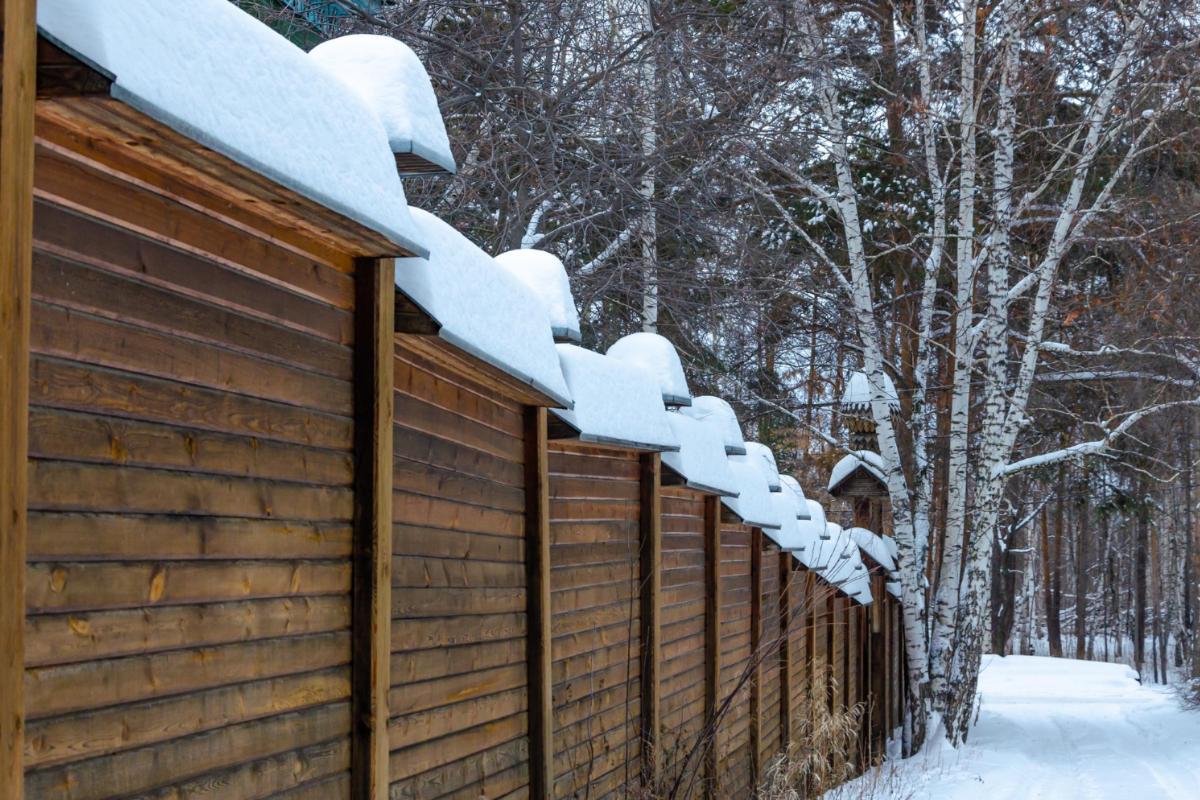Winter Maintenance Tips for Your Fence

The winter season brings cold temperatures and unpredictable weather elements that are hard on the most robust exterior home features. Luckily, you can take some easy steps to preserve the longevity of your border to endure year after year.
All appropriate fence maintenance begins with a comprehensive physical examination of a fence. This involves more than looks. Inspections can assist in extending the life of your barrier by many years when you know what to watch for. First, you should look for deterioration of the wood, like splitting or holes, along with structural impairment, like loose posts. Identify any wear and address it presently, particularly before winter arrives. The damage will get worse- and more expensive to repair- the longer you delay.
Before winter weather arrives, removing overhanging limbs and trimming shrubs back from your fence line is essential. Overhanging limbs drip water and snow throughout the winter. This dribble may freeze, forming a heavy layer of ice on your barrier. This extra volume is heavier than you believe, generating additional and excessive wear and tear. In addition, tree limbs often break off from the weight of frozen water and land on your fence, causing significant structural damage or disrepair. Aggressive trimming brings some peace of mind and avoids these issues in the first place.
You should also trim any shrubs bordering the fence line. A big concern in winter months is decay. Over a month, the thawing and re-freezing cycle on shrubs can damage your wood fence, exposing it to prime conditions for rotting. Trim shrubs, so there is a gap between the leaves and your border to mitigate this threat.
Along the same lines, you should remove artificial hanging objects for the same logic as natural ones. Leaning toys, rakes, and other yard equipment can produce snow and ice pile-ups and cause the same wear as overhanging trees and shrubs. Proper fence care is about mitigating the threat of rot as much as possible. Relocate these items to a covered place until the danger of a freeze passes.
While you can prune trees and shrubs and haul yard tools away from your fence, you can't prevent falling leaves from accumulating around the yard or blowing onto the fence line. While you might get the urge to rake leaves and yard waste to the edge of your yard, you mustn't leave it on the fence line all winter. Though piles of leaves and debris don't add a weight load to a fence like overhanging trees, in cold months, they trap moisture that causes warping in wood fences and rust on metal ones. Reposition leaves and debris away from the fence during the fall season instead of in one big purge. If you pick up debris and leaves regularly throughout the autumn and the start of winter, particularly at the onset of the leaf change season, you can make a more manageable workload and sidestep one big cleanup at the very end. As with all winter fence maintenance tips, aggressive care makes maintenance reasonable and manageable.
If you follow a comprehensive maintenance routine, you can avoid expensive fence restorations and appreciate a beautiful fence for a decade or more. Then, when spring arrives, your fence will be tip-top for spring and summer fun. Contact our fence contractors in Sanford for more information today!